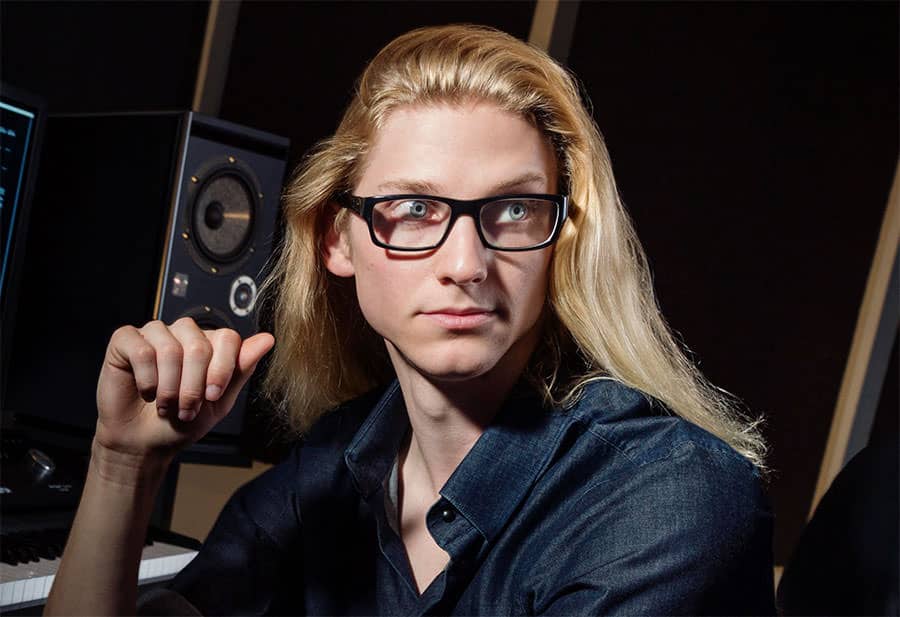
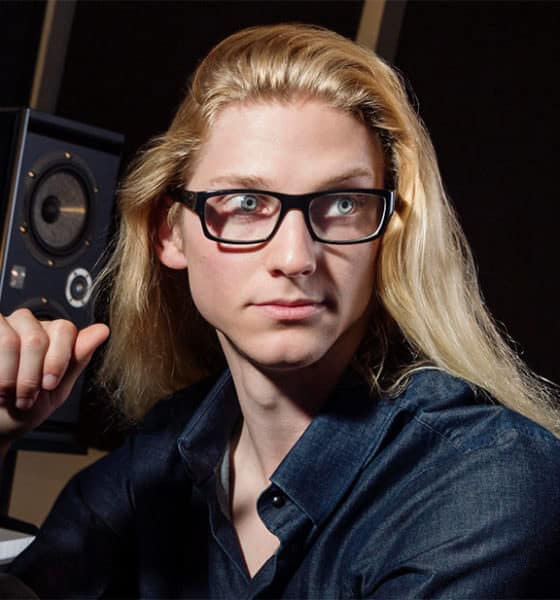


Published
6 years agoon
Matthew Carl Earl may have started off only a Star Wars fan growing up but Michael Giacchino’s 2009 film score for Star Trek stole his heart. After being approached to compose the soundtrack for VRstudios and Dave & Buster’s featured VR attraction, Star Trek: Dark Remnant, he was soaring on cloud 9. Earl would fully immerse himself in anything and everything Star Trek, listening to piece after piece in his car… Imagining every corner of its universe.
Earl told The Natural Aristocrat about the differences of composing for a virtual reality-centric project, using Pro Tools to make the magic happen, and how it’s all in the details. Fun fact for those curious what the ‘Hexany’ in ‘Hexany Audio‘ means: “A Hexany is a contemporary six-note geometric musical structure.”
The Natural Aristocrat [Nir Regev]: How much creative freedom were you given with the Star Trek license for the score?
Matthew Carl Earl: Yeah, I had a lot of freedom, for sure! When we first set off on the project we went through a lot of the Star Trek music and were looking at what we wanted to bring into the game that was just super iconic. Obviously, the Michael Giacchino soundtrack for the 2009 film, was like ‘Duh, we have to use that!’ I mean it’s just so iconic!
We obtained the license for much of that [Giacchino] soundtrack, and I wrote and cut the music within that style while employing those themes. But other than that, it was really about staying within the universe and staying true to the whole Star Trek kind of sound. I’d say I was pretty free.
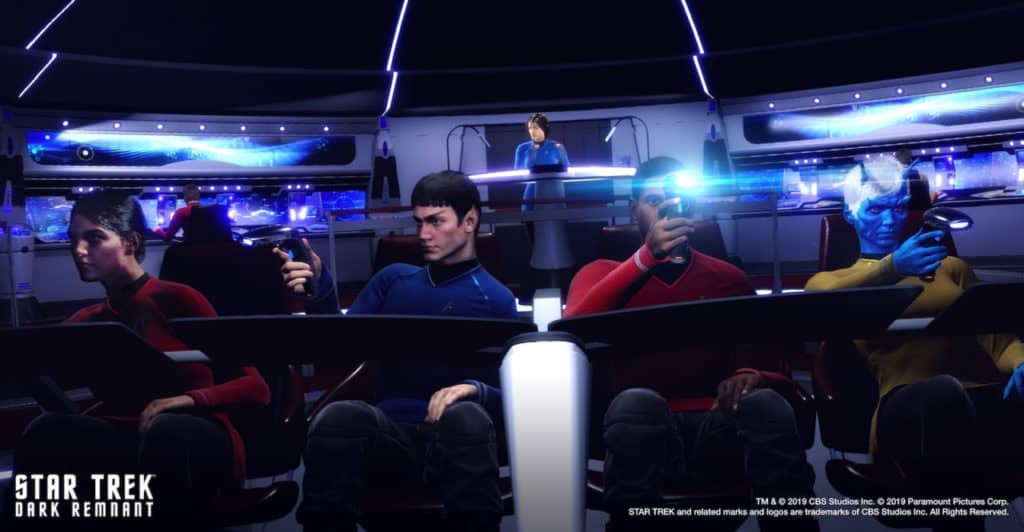
Star Trek: Dark Remnant Crew – Photo Credit: CBS / Paramount Pictures / VRstudios
What’s it like to compose for a VR project? Do you ever wear the headsets yourself while recording to test out the experience so-to-speak?
At our studio, Hexany Audio, we do a good amount of VR games and I’ll always play through the game before I start writing music. Just to get a feel for things and look around, see what the game really feels like. We get a video capture while I’m playing and then I’ll bring that back to my desk when I’m writing. So I’ll watch the video capture and write through it, almost like scoring a film. But even just going through and playing the game to get the experience does help tremendously.
As for the actual music, for me I feel VR music has to be more atmospheric and a little bit more mood setting. Instead of in your face wall to wall music. Definitely more immersive than just music on top of something, you know? So I do tend write VR music a little bit more underscored, and a little bit more ambient.
Do you need to have a lot more leniency in sound effects then because of the potential for jump scares?
Yes, I guess but sometimes those jump scares are the desired effect! (laughs) The sound guys also do take the fact that it’s VR heavily into account. For example, not in this one but in other games, you could pick up an object and hold it right up to your ear.
Let’s say you grab a torch and put it right beside your head, you want to hear the fire going crazy! But in a normal game you couldn’t really do that. So there’s a couple of extra things you take into account especially with the sound, but also with the music.
Were you inspired at all by ambient-focused material like the original Thief games by Eric Brosius? I notice you mentioned torch sounds.
Yeah, yeah definitely. But for this project not as much because this was a weird middle ground where yes, it’s VR so you want to make it immersive but it’s still Star Trek. The music in Star Trek is bombastic and huge, ridiculously orchestrated. So I was trying to find a middle ground where I was using only the orchestra but creating a lot of textural music.
I was looking a lot into early 20th century stuff like [Béla] Bartók and [Gustav] Holst and just trying to create these spooky space textures to go along with the orchestra.
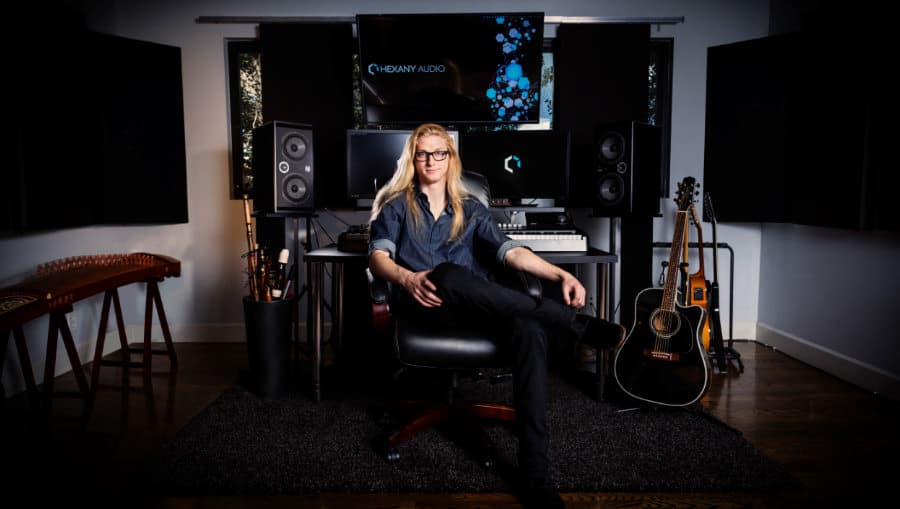
Composer Matthew Carl Earl talks writing Star Trek: Dark Remnant’s score – Photo provided by Matthew Carl Earl
How do you feel fans have reacted overall to the audio work? Do you ever frequent Dave & Busters just to see how people react?
Yeah, yeah! We’ve done a couple of projects with VRstudios and Dave & Busters that were similar to this project. It was really fun to actually go there and see people freaking out about it. It’s often people’s first experience with VR. And it’s also VR plus, motion based, and has a ride-based features like the wind blowing in your face and stuff. It’s pretty cool to see people’s reactions!
Were you a Star Trek fan growing up?
You know I actually wasn’t I was a big Star Wars fan! (laughs) But I knew the new Star Trek films and I was pretty familiar with the music already. When I heard we were going to be working on this project I was so excited I binged on everything for two weeks. I listened to Star Trek in the car so I could get fully immersed in the Star Trek mindset and the music would come more naturally.
Do you feel it can overly influence you creatively to hear other people’s work on such a level? Or that with a license-based game people have certain audio expectations you have to meet?
You know it depends. In other games if I’m trying to write something that’s a totally original style, yes, I’d definitely worry about listening too much to one composer or style. As I wouldn’t want it to sound only like one other thing. But since this is Star Trek, and you’re trying to sell that experience, I totally want it to be within the sound that’s already established by Michael Giacchino. We did have the license for a lot of the themes, so I obviously employed those.
How big was your team? I know you’re the lead composer but I know there is a lot of other composers at Hexany Audio so I was curious, do you work primarily alone with just slight assistance here and there?
At our studio we have fifteen people and that consists of mostly sound designers and production people who help manage different things. Then we have our music team. For this project, on the music side of it, I was the sole composer until the very end.
Then another composer here, Obadiah Brown-Beach, I had him help me with the multiple branched endings. We went back and forth working on each other’s themes to make sure it’s seamless and reach deadlines. The fact we all work in the same building makes collaboration really easy.
What software do you use to record on digitally? Cubase?
Pro Tools actually.
Is that what you got used to when you were younger? Or is it a professional standard on the gaming audio side these days like Unreal Engine and Unity is on the visual side?
No, no Pro Tools was what I first started using when I was like 13 or 14, and I’ve used it ever since! I know it really well and it fits my needs, so I wouldn’t want to switch to something new. I’m totally 100% fine with it! (laughs)
We actually use Pro Tools almost exclusively in our studio because sometimes clients will actually ask for Pro Tools sessions. Especially on the sound side, not so much on the music side.
Using Pro Tools keeps everyone really synchronized, it’s still the industry standard for recording, sound engineering and stuff like that. For music, it’s not used as much but it has no drawback. So a developer wouldn’t really request to use different software in place of it.
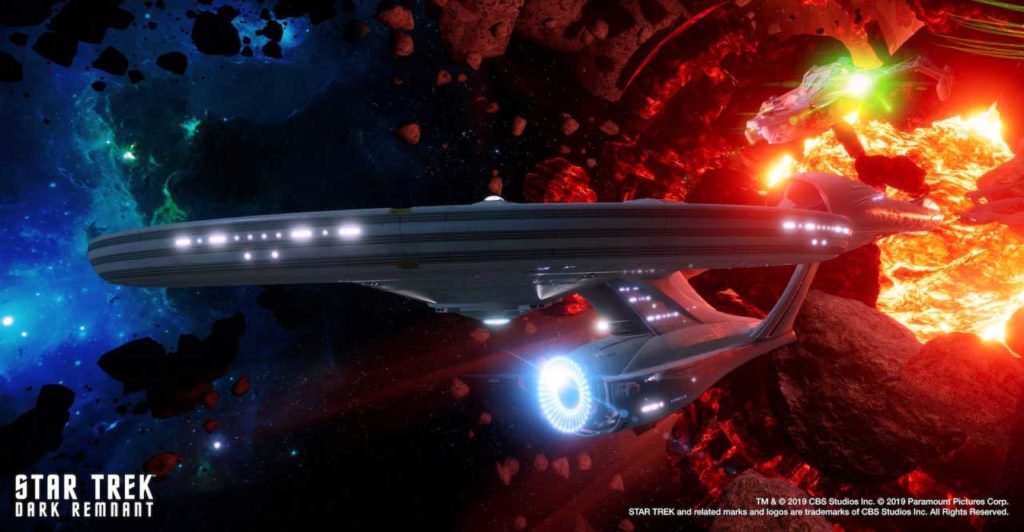
Star Trek: Dark Remnant – Photo Credit: CBS / Paramount Pictures / VRstudios
Are you possibly going to work on a Star Trek sequel to this VR attraction?
I have no idea but more Star Trek please! This was honestly some of the most fun I’ve ever had writing music. I would 100% love to be working on more Star Trek stuff!
Check out Matthew Carl Earl’s official website and follow him on Soundcloud, Twitter, and Facebook! Remember to try out the Star Trek: Dark Remnant VR attraction at your local Dave & Buster’s.
Read more about Hexany Audio and and VRstudios at their respective official websites. Pro Tools is available for purchase on their official store page and Amazon for those looking to begin their own scoring journeys.
Nir Regev is the founder of The Natural Aristocrat. You can directly contact him at [email protected] for coverage consideration, interview opportunities, or general comments.

The Natural Aristocrat